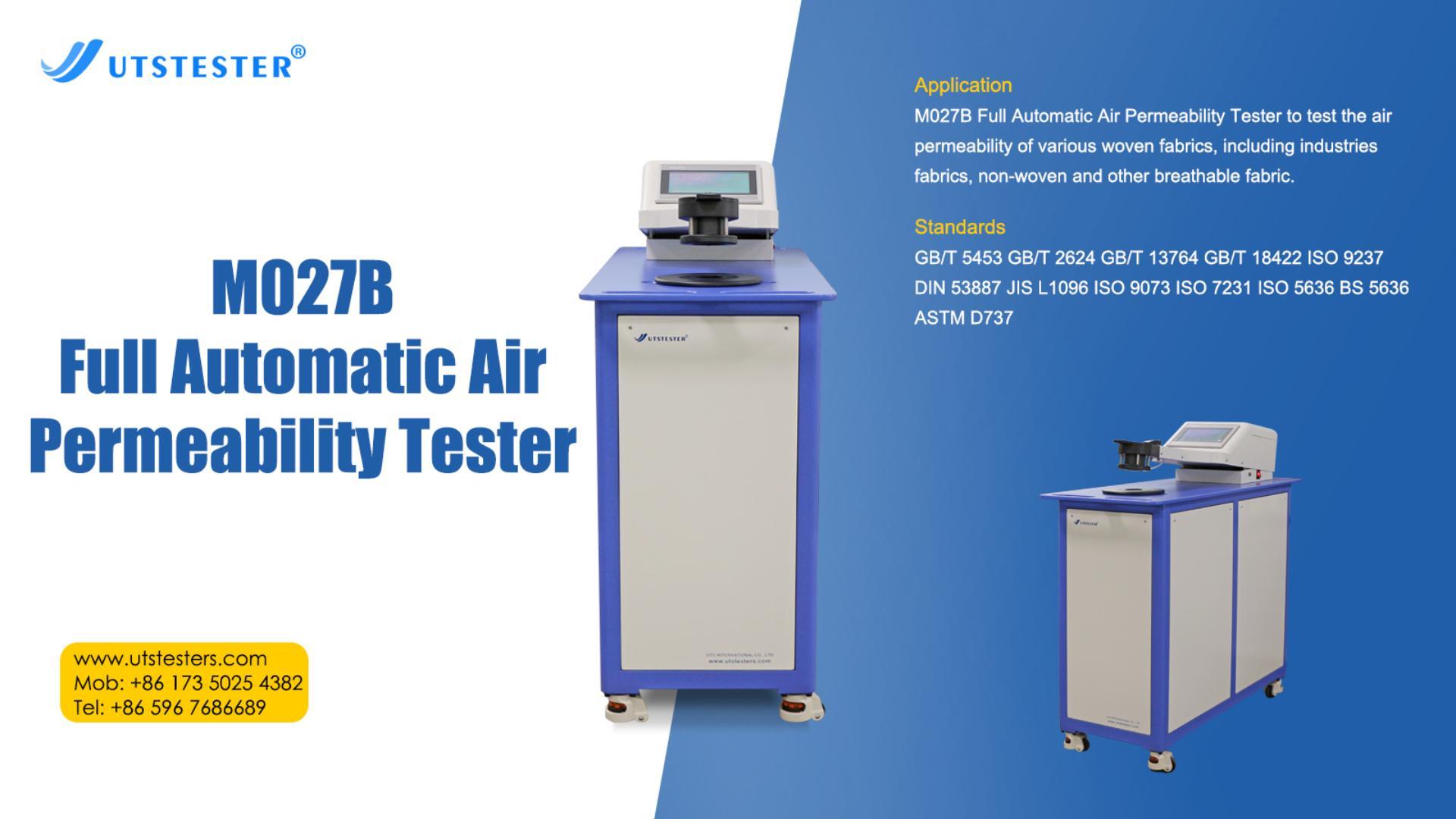 +86 152 6060 5085
+86 152 6060 5085
 +86 152 6060 5085
+86 152 6060 5085
Blog
Catalog
Latest Blog
The fabric air permeability tester is an instrument specially used to measure the air permeability of fabrics (such as clothing, footwear, industrial textiles, etc.). Its core purpose is to evaluate the ability of materials to allow air to pass under different pressure difference conditions. The following are its main application scenarios and purposes:
1. Quality control and production optimization
Production process verification: Ensure that the air permeability of fabrics during the production process (such as textile, coating, lamination, etc.) meets the design standards to avoid performance degradation due to process deviations.
Batch consistency detection: Compare different batches of raw materials or finished products to maintain the stability of product air permeability.
2. Functional clothing and equipment development
Sports/outdoor clothing: Test the air permeability of products such as assault jackets and mountaineering clothes, and balance the needs of windproof and moisture removal (such as the research and development of fabrics such as GORE-TEX).
Protective equipment: Evaluate the air permeability of medical protective clothing and industrial dustproof clothing to ensure the protective effect while avoiding stuffiness.
Shoe materials and tents: Optimize the air permeability of upper materials or tent fabrics to improve wearing comfort or ventilation performance.
3. Industry standards and certification
Compliance testing: meet international standards (such as ISO 9237, ASTM D737, GB/T 5453, etc.) and obtain product certification (such as CE, OEKO-TEX).
R&D benchmarking: compare competitor or industry benchmark data to guide new product development.
4. Material research and innovation
Evaluation of new materials: test the air permeability efficiency of innovative materials such as nanofibers and breathable membranes to promote technology applications.
Analysis of multi-layer composite materials: study the impact of different laminate structures (such as non-woven fabrics + films) on overall air permeability.
5. User experience and market competitiveness
Comfort quantification: convert air permeability data (such as mm/s or cfm) into product selling points (such as "air permeability increased by 20%)" to enhance market persuasiveness.
Problem diagnosis: for the "stuffy" problem complained by users, locate material or design defects through testing.
Brief description of test principle
The instrument applies a controllable air pressure difference on both sides of a fixed area of fabric to measure the volume of air (or flow rate) passing through per unit time. The results are usually expressed as air permeability (such as L/m²/s) or air permeability resistance, with higher values indicating greater air permeability.
Key parameters for selecting a tester
Test standard compatibility (such as support for multiple international standards)
Range and accuracy (adapting to different materials from dense down-proof fabrics to sparse mesh fabrics)
Automation functions (such as digital pressure regulation, direct data export)
This type of instrument is indispensable in textile laboratories, quality inspection agencies and R&D centers, and directly affects the functional positioning and market acceptance of products.

Email: hello@utstesters.com
Direct: + 86 152 6060 5085
Tel: +86-596-7686689
Web: www.utstesters.com